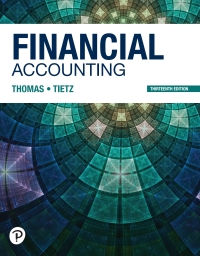
Most studies on the Fisher Effect have not been able to establish any relationship between interest rates and expected inflation rates. However, there has been found to be a relationship between current interest rates and past inflation rates and this is often interpreted as evidence in favor of the Fisher Effect (Demirag & Goddard 1994, 75). Shapiro (1998) compares the inflation rates with nominal interest rates for 22 countries. He comes to the conclusion that countries with higher inflation rates generally have higher interest rates. This is according to the author consistent with the hypothesis that most of the variation in nominal interest rates across countries is due to differences in inflationary expectations. Fama (1975) finds in his study a relationship between nominal interest rates and inflation rates. His result thus supports the Fisher Effect. Booth & Ciner (2001) find a one-to-one relationship between 1-month Eurocurrency interest rates and inflation rates. They also present evidence that the 1-month Eurocurrency rate contains information about the future inflation. Mishkin (1992) finds no support for a short run Fisher Effect. Coppock and Poitras (1999) find evidence that the interest rate fail to fully adjust to inflation. To sum up: There are many conflicting evidence for the Fisher Effect. No clear-cut conclusion can be drawn and the outcome of the studies might vary with the methodologies used. However, as with the studies on the empirical evidence for the PPP it seems like the Fisher Effect fails to hold more in the short run than in the long run. Many studies support the theory of the Fisher Effect in the long run. Most studies on the Fisher Effect have not been able to establish any relationship between interest rates and expected inflation rates. However, there has been found to be a relationship between current interest rates and past inflation rates and this is often interpreted as evidence in favor of the Fisher Effect (Demirag & Goddard 1994, 75). Shapiro (1998) compares the inflation rates with nominal interest rates for 22 countries. He comes to the conclusion that countries with higher inflation rates generally have higher interest rates. This is according to the author consistent with the hypothesis that most of the variation in nominal interest rates across countries is due to differences in inflationary expectations. Fama (1975) finds in his study a relationship between nominal interest rates and inflation rates. His result thus supports the Fisher Effect. Booth & Ciner (2001) find a one-to-one relationship between 1-month Eurocurrency interest rates and inflation rates. They also present evidence that the 1-month Eurocurrency rate contains information about the future inflation. Mishkin (1992) finds no support for a short run Fisher Effect. Coppock and Poitras (1999) find evidence that the interest rate fail to fully adjust to inflation. To sum up: There are many conflicting evidence for the Fisher Effect. No clear-cut conclusion can be drawn and the outcome of the studies might vary with the methodologies used. However, as with the studies on the empirical evidence for the PPP it seems like the Fisher Effect fails to hold more in the short run than in the long run. Many studies support the theory of the Fisher Effect in the long run







